Abstract
A mathematical model that describes the relationship between sinus pressure and nerve discharge frequency of the carotid sinus baroreceptor is presented. It is partly based upon the single-fiber data obtained by Clarke from the sinus nerve of a dog. The model takes into account what is currently known about the physiology of the baroreceptor. It consists of two nonlinear ordinary differential equations and eight free parameters. With one set of values for these eight parameters, the model reproduces well the experimental results reported by Clarke for positive ramp pressure inputs. Only three parameters needed to be adjusted in order to fit the dynamic data. The remaining five were obtained from static and steady-state data.
Full text
PDF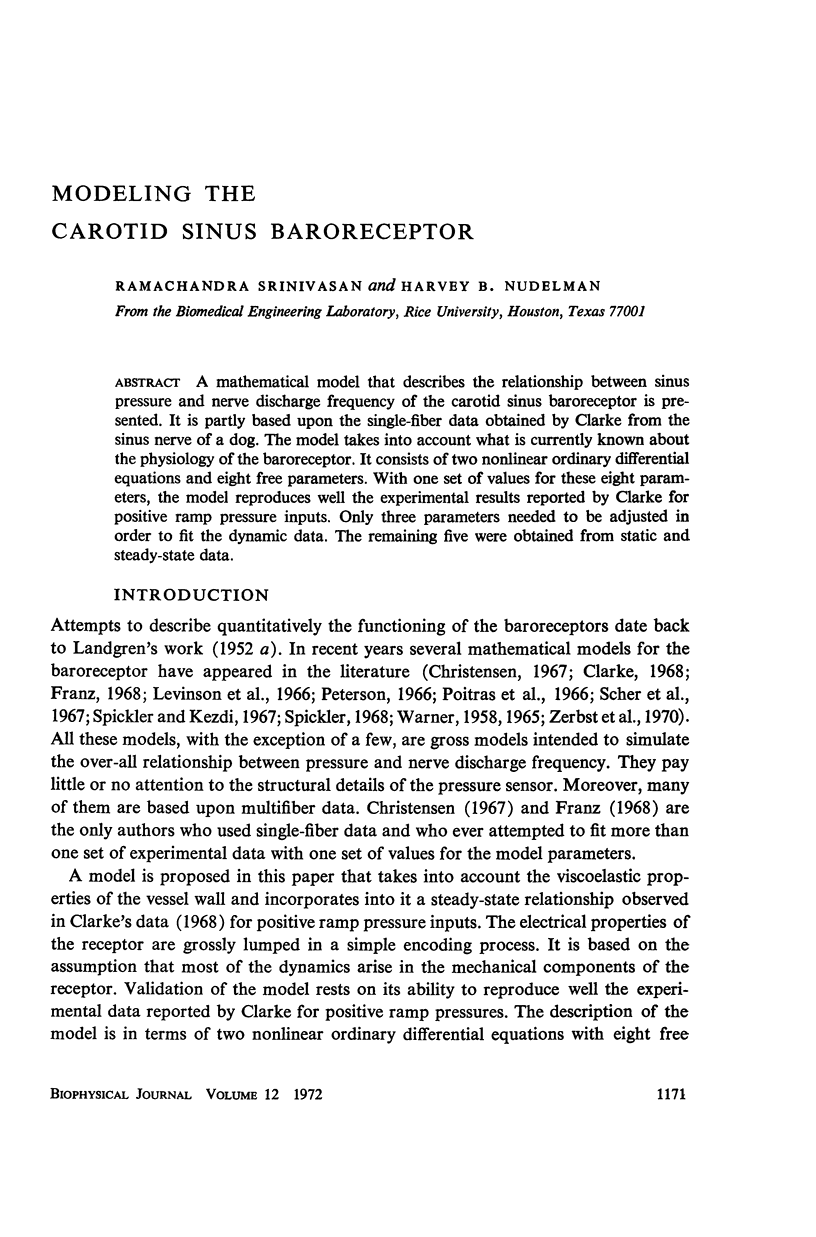
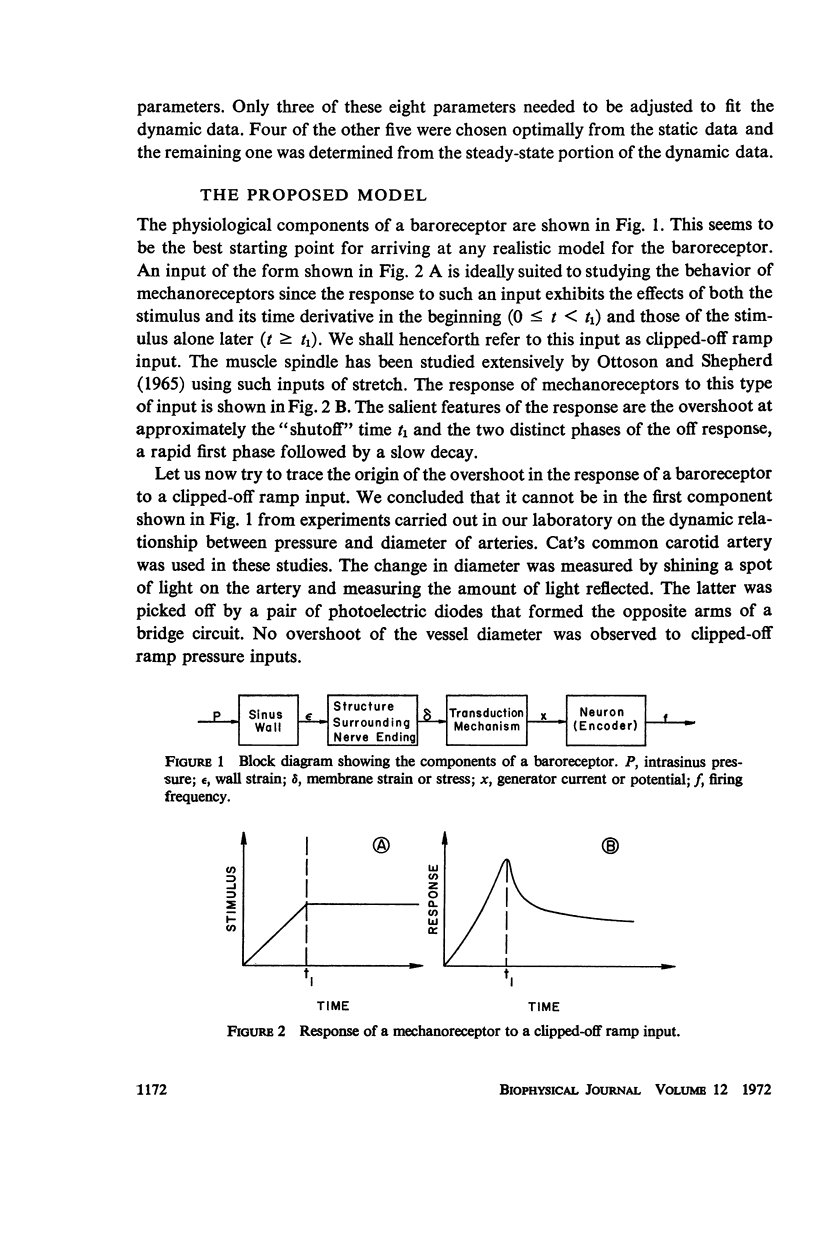
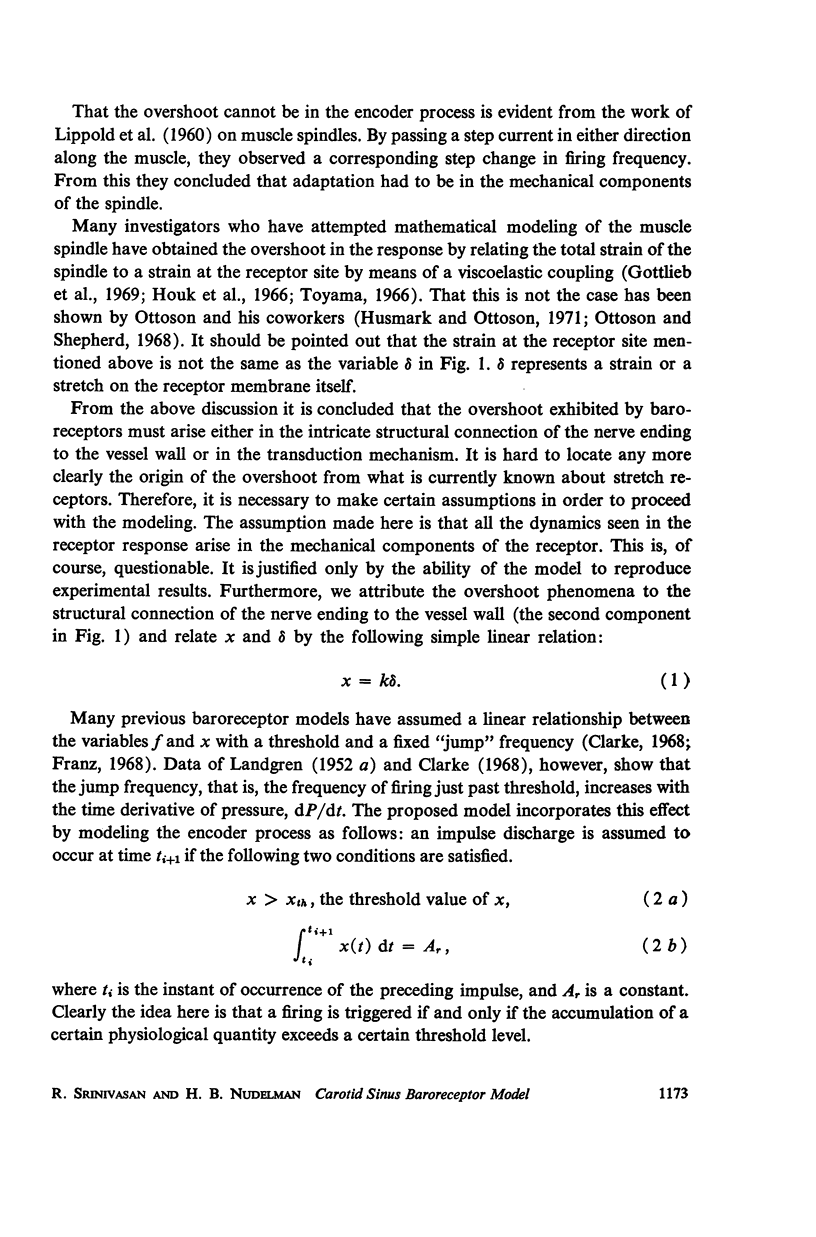
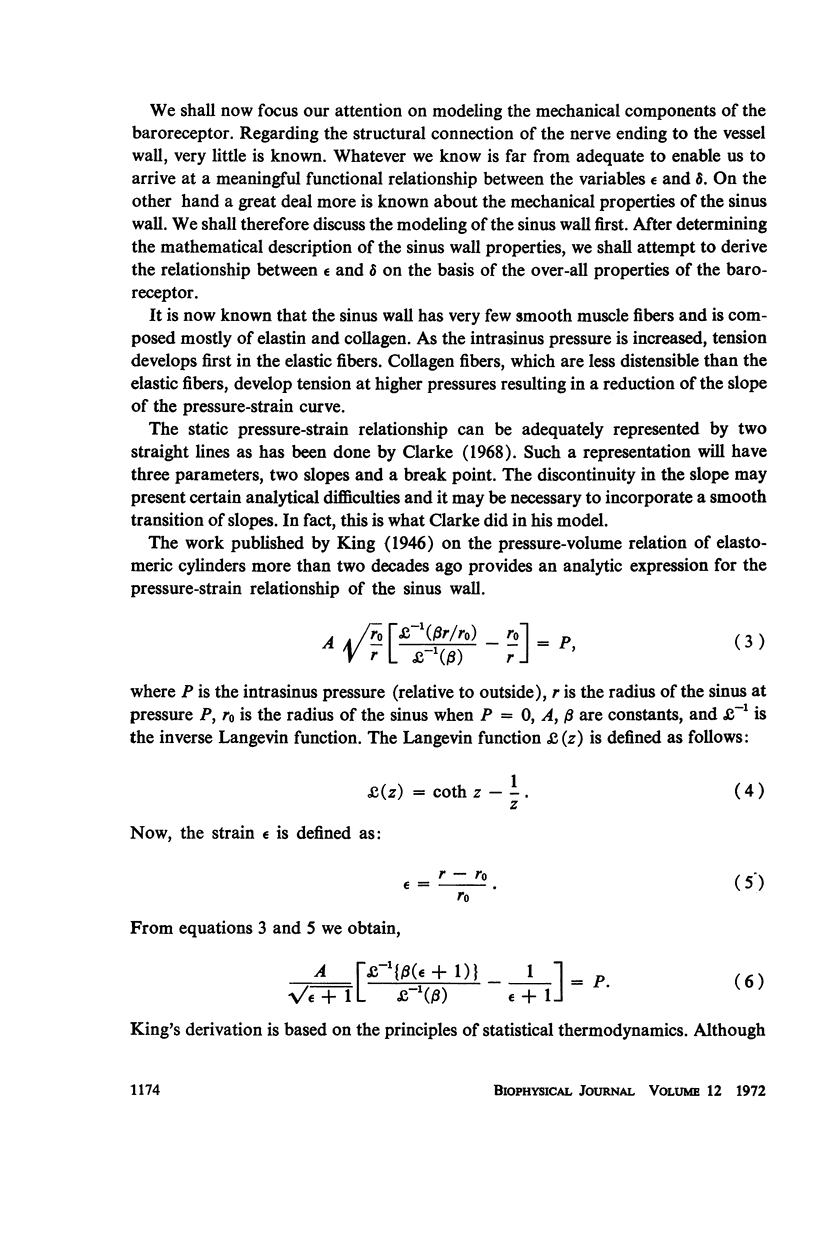
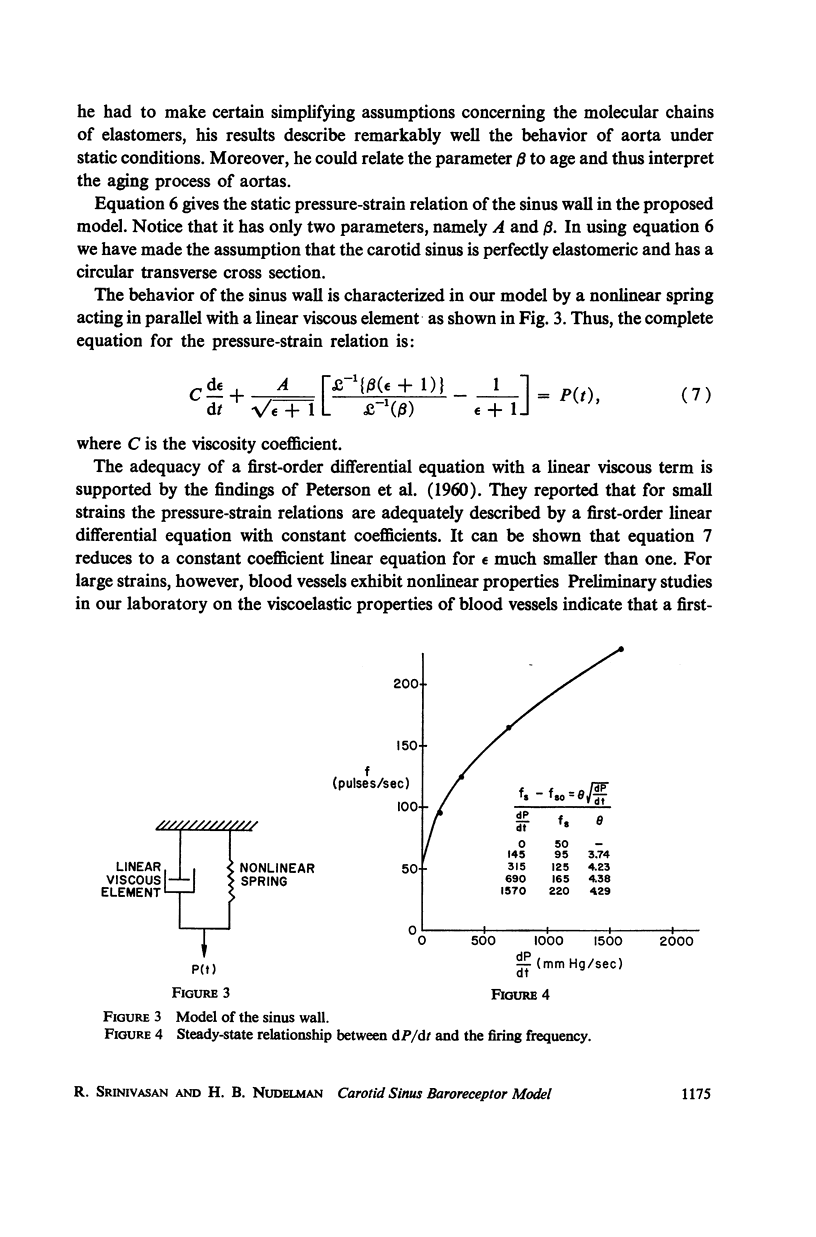
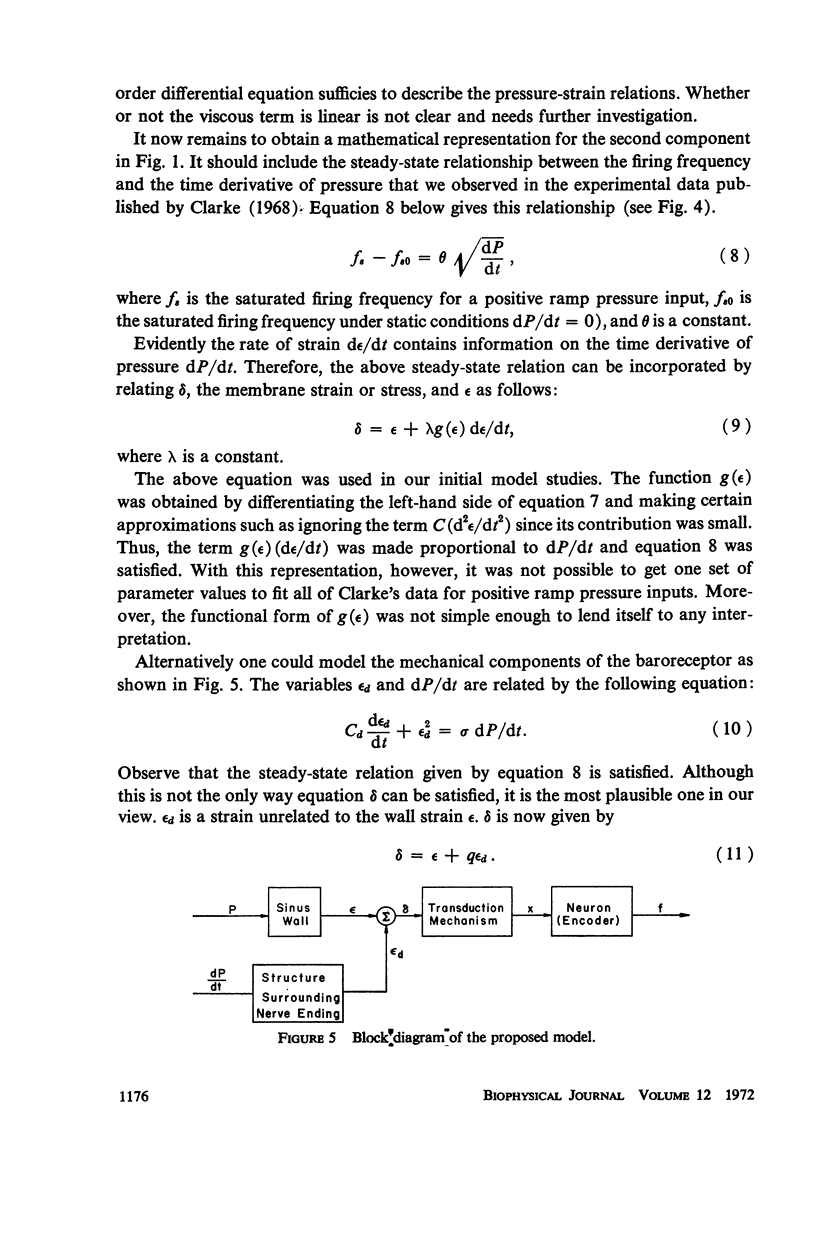
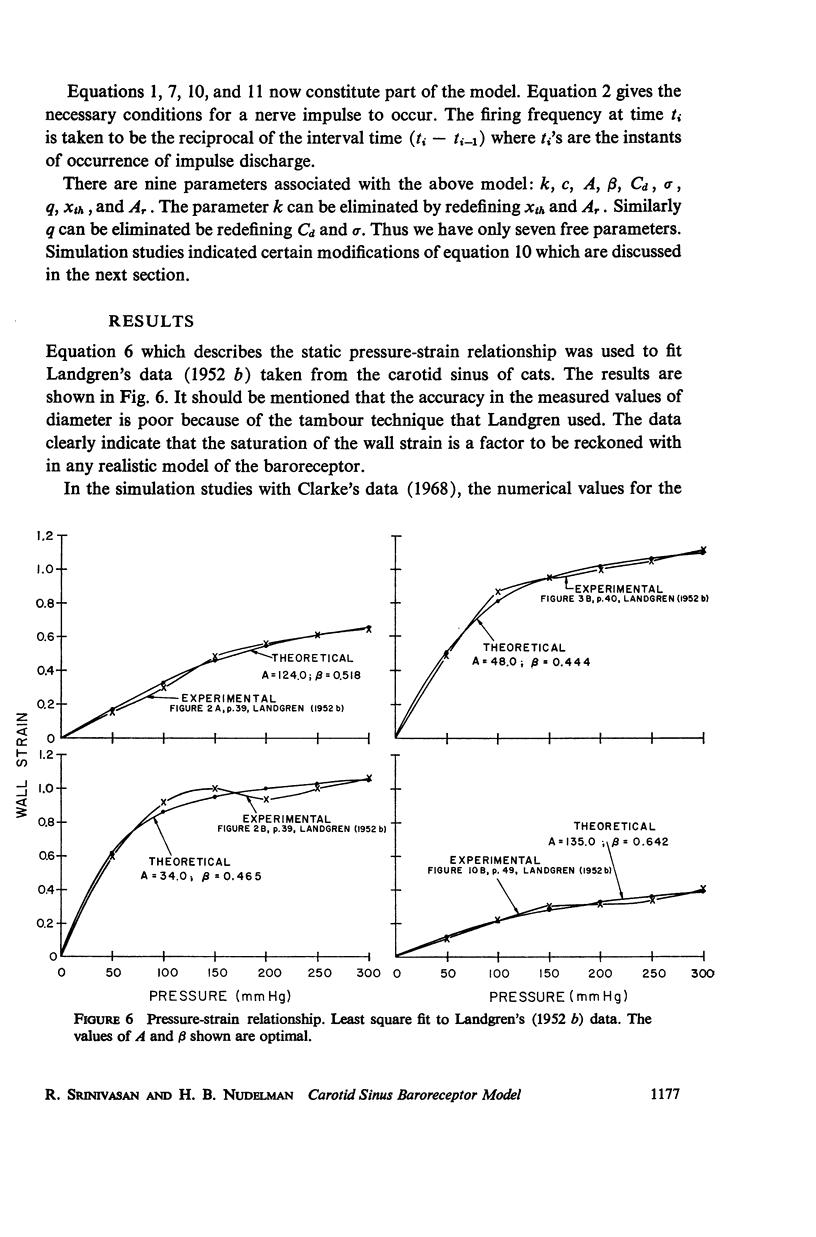
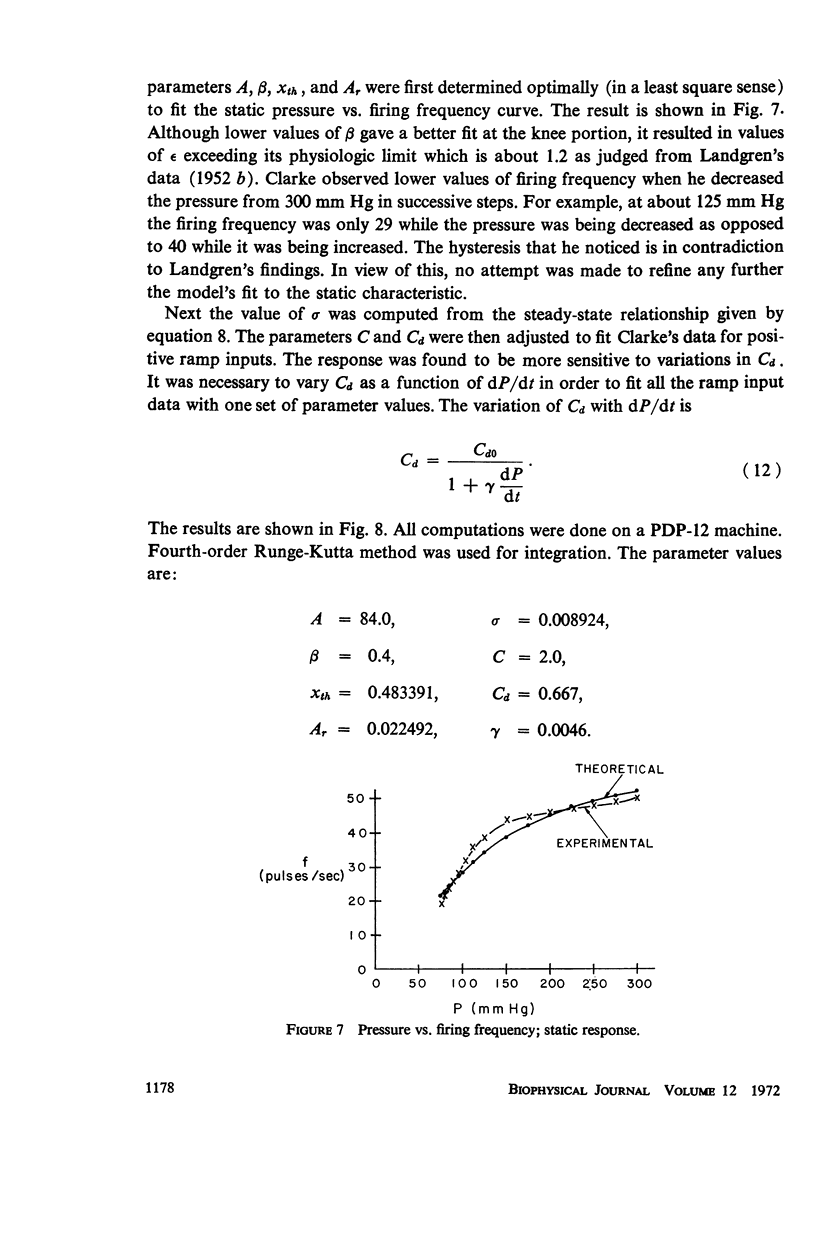
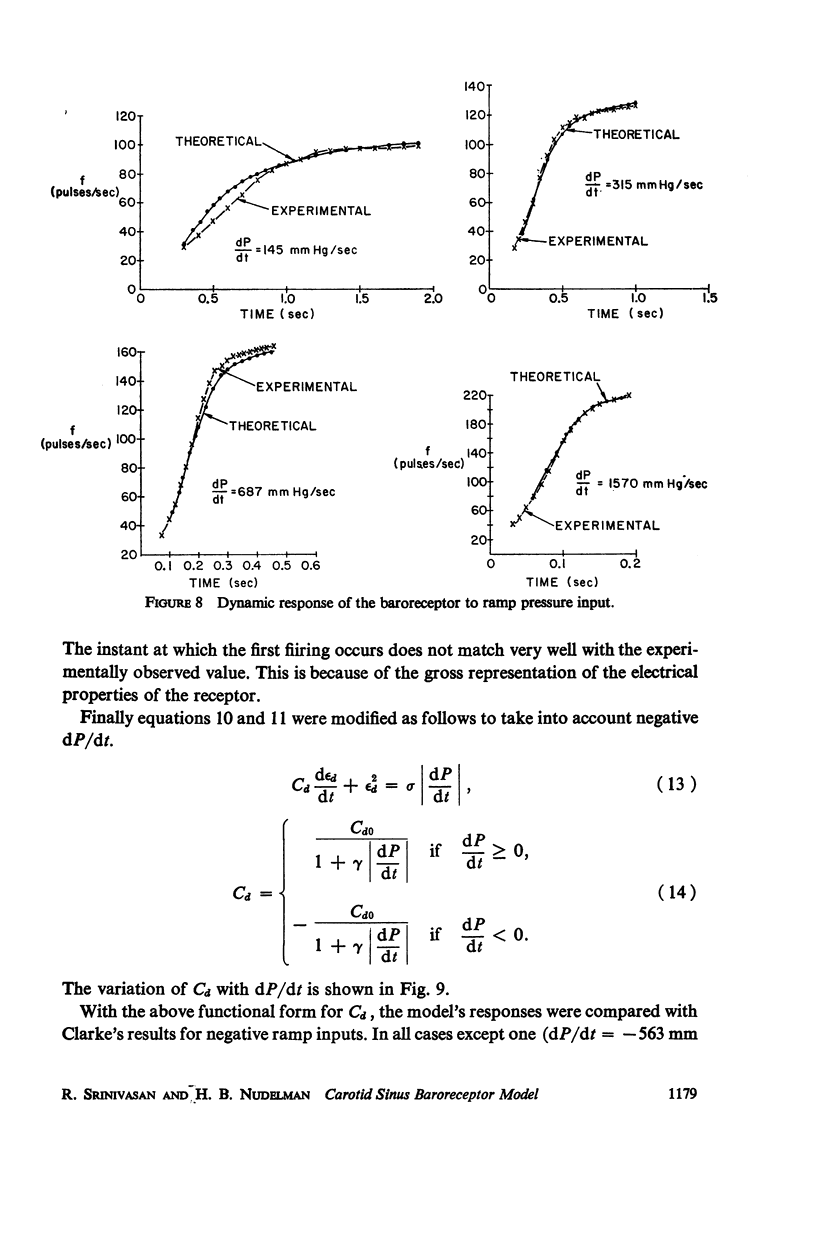
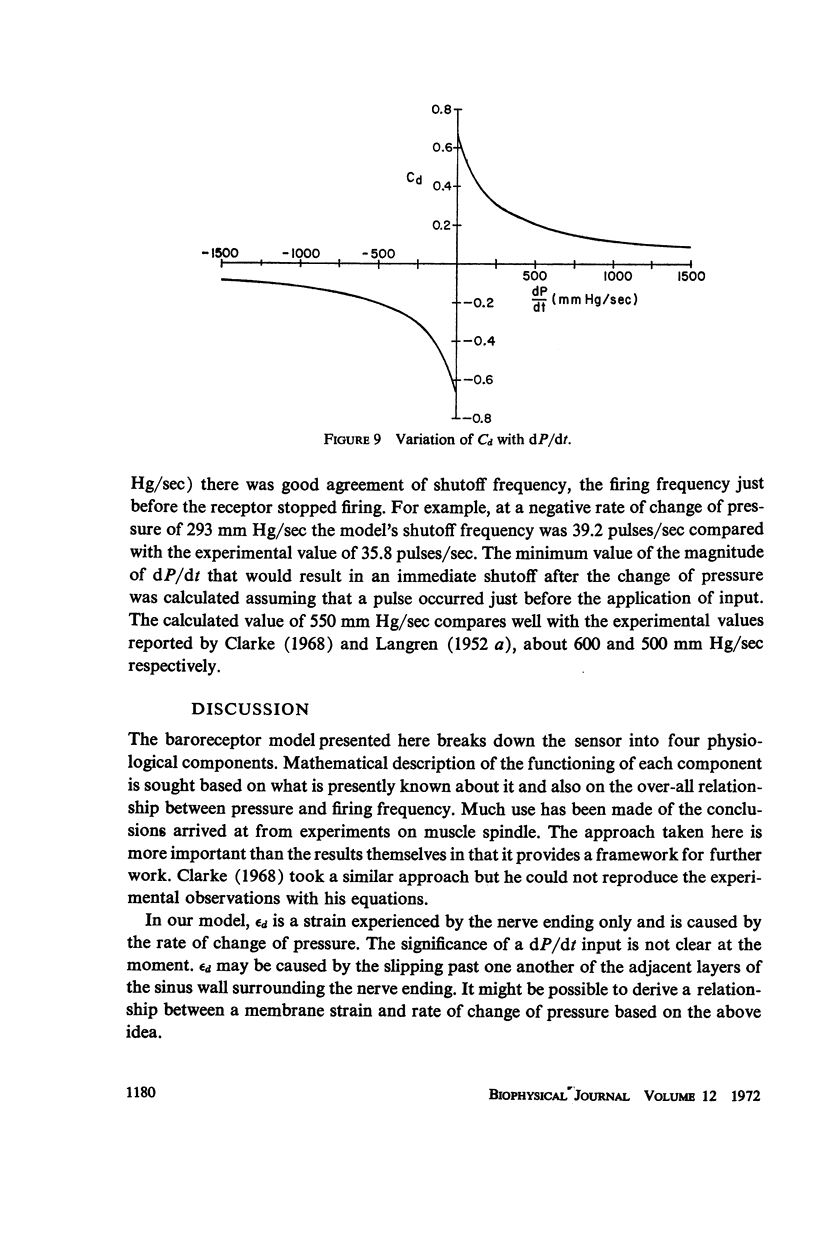
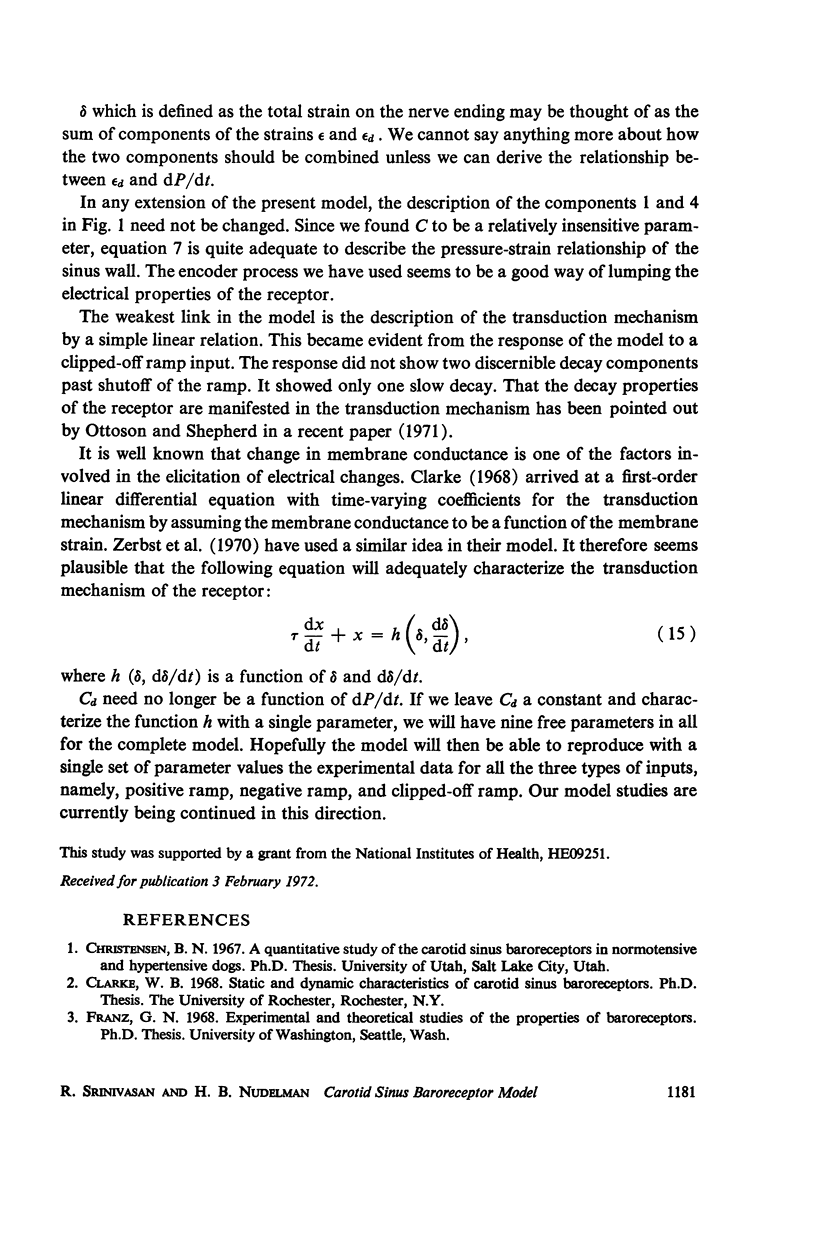
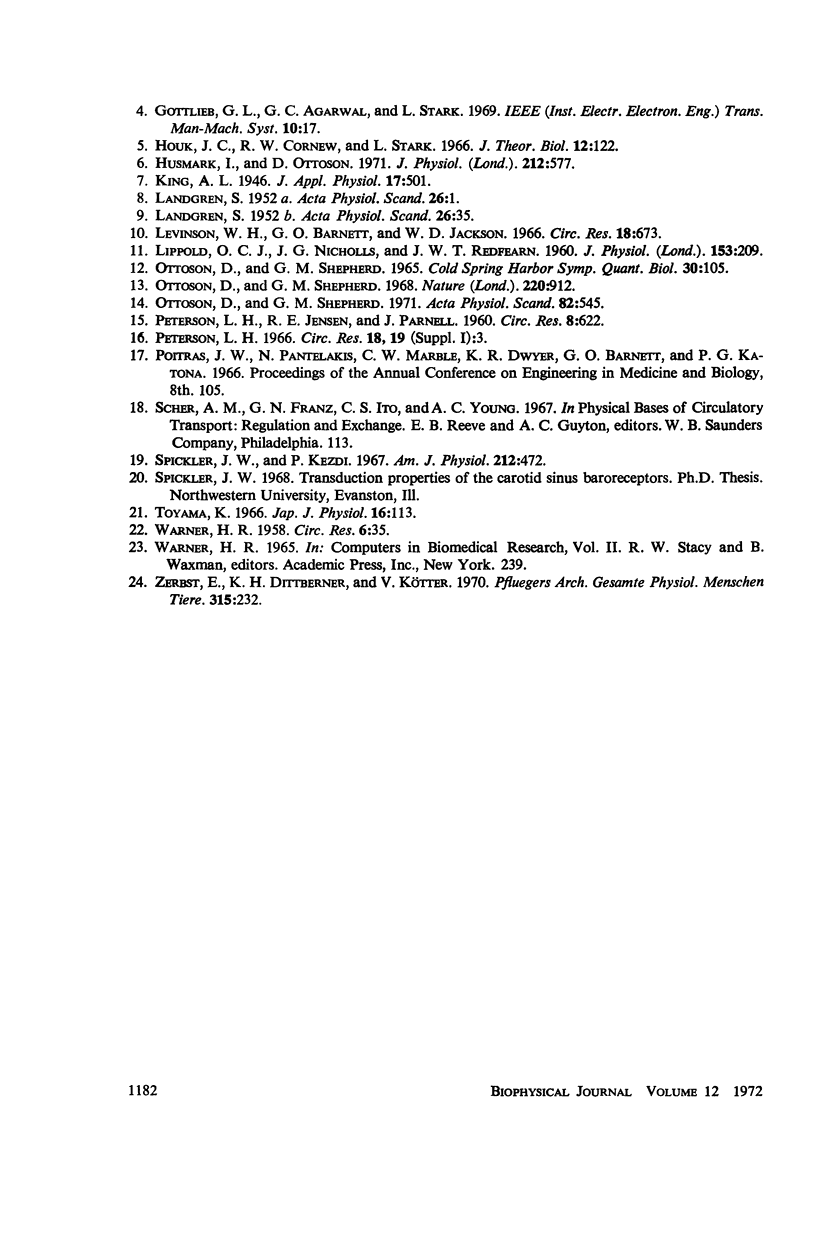
Selected References
These references are in PubMed. This may not be the complete list of references from this article.
- Husmark I., Ottoson D. The contribution of mechanical factors to the early adaptation of the spindle response. J Physiol. 1971 Feb;212(3):577–592. doi: 10.1113/jphysiol.1971.sp009343. [DOI] [PMC free article] [PubMed] [Google Scholar]
- LIPPOLD O. C., NICHOLLS J. G., REDFEARN J. W. Electrical and mechanical factors in the adaptation of a mammalian muscle spindle. J Physiol. 1960 Sep;153:209–217. doi: 10.1113/jphysiol.1960.sp006529. [DOI] [PMC free article] [PubMed] [Google Scholar]
- Levison W. H., Barnett G. O., Jackson W. D. Nonlinear analysis of the baroreceptor reflex system. Circ Res. 1966 Jun;18(6):673–682. doi: 10.1161/01.res.18.6.673. [DOI] [PubMed] [Google Scholar]
- Ottoson D., Shepherd G. M. Changes of length within the frog muscle spindle during stretch as shown by stroboscopic photomicroscopy. Nature. 1968 Nov 30;220(5170):912–914. doi: 10.1038/220912a0. [DOI] [PubMed] [Google Scholar]
- Ottoson D., Shepherd G. M. Receptor potentials and impulse generation in the isolated spindle during controlled extension. Cold Spring Harb Symp Quant Biol. 1965;30:105–114. doi: 10.1101/sqb.1965.030.01.014. [DOI] [PubMed] [Google Scholar]
- Ottoson D., Shepherd G. M. Transducer characteristics of the muscle spindle as revealed by its receptor potential. Acta Physiol Scand. 1971 Aug;82(4):545–554. doi: 10.1111/j.1748-1716.1971.tb05001.x. [DOI] [PubMed] [Google Scholar]
- Spickler J. W., Kezdi P. Dynamic response characteristics of carotid sinus baroreceptors. Am J Physiol. 1967 Feb;212(2):472–476. doi: 10.1152/ajplegacy.1967.212.2.472. [DOI] [PubMed] [Google Scholar]
- Toyama K. An analysis of impulse discharges from the spindle receptor. Jpn J Physiol. 1966 Apr 15;16(2):113–125. doi: 10.2170/jjphysiol.16.113. [DOI] [PubMed] [Google Scholar]
- WARNER H. R. The frequency-dependent nature of blood pressure regulation by the carotid sinus studied with an electric analog. Circ Res. 1958 Jan;6(1):35–40. doi: 10.1161/01.res.6.1.35. [DOI] [PubMed] [Google Scholar]
- Zerbst E., Dittberner K. H., Kötter V. Studies on blood-pressure regulation by the use of a baroreceptor analog. Pflugers Arch. 1970;315(3):232–249. doi: 10.1007/BF00586415. [DOI] [PubMed] [Google Scholar]


